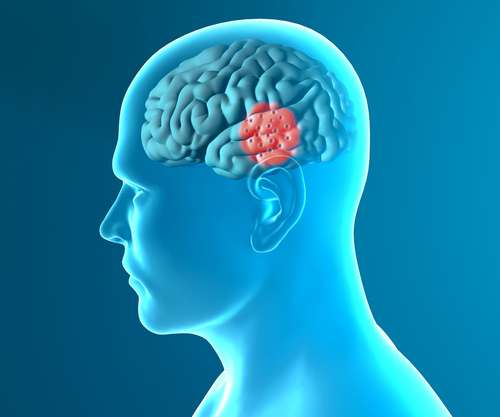Vesicles Can Cross Blood Brain Barrier to Treat Central Nervous System Disorders
 According to the Parkinson's Disease Foundation, as many as a million people in the U.S. suffer from Parkinson’s disease, a central nervous system (CNS) disorder resulting from loss of cells in various parts of the brain. Others have difficult-to-treat HIV in the central nervous system. What do these diseases have in common?
According to the Parkinson's Disease Foundation, as many as a million people in the U.S. suffer from Parkinson’s disease, a central nervous system (CNS) disorder resulting from loss of cells in various parts of the brain. Others have difficult-to-treat HIV in the central nervous system. What do these diseases have in common?
The “blood brain barrier,” a tight junction around the CNS capillaries, prevents poisons from reaching the brain by separating circulating blood from the brain’s extracellular fluid. At the same time it keeps drugs from passing into the brain and reaching specific targets to fight CNS diseases.
“Drug delivery to the brain is current hot topic for pharma, as pharma seeks methods to deliver proprietary drugs into the brain, reformulate drugs used for one indication for another and develop new therapeutics for unmet medical needs, especially for neuropsychiatric and neurodegenerative diseases,” according to Susan Rosenbaum, J.D., founder, chairman and CEO of Lauren Sciences LLC, a privately held biotechnology company. Speaking on “The Next Frontier in Drug Delivery—Crossing the Blood Brain Barrier” at the New York City Medtech Forum recently, Rosenbaum explained how her company is developing a targeted drug delivery system invented in Israel, along with accompanying therapeutics.
A team of Ben-Gurion University (BGU) scientists in Beersheva, Israel, has produced a system of synthetic nanoscale structures, called V-Smart drug delivery technology, to allow oral medications to pass through biological membranes, target sites in the brain and selectively release the drugs. The interdisciplinary team of emeritus Prof. Eliahu Heldman of the university’s clinical biochemistry department, Dr. Sarina Grinberg of the chemistry department and Dr. Charles Linder of the Avram, and Stella Goldstein- Goren Department of Biotechnology Engineering created the technology using microscopic, bubble-like structures called vesicles.
The nano-sized vesicles are made of specifically designed structures called bolaamphiphiles. The synthetic sacs, which are highly stable, control the release of the drugs that pass through biological barriers and target the place where the drug will be released in the brain. They offer high stability, large capacity, ability to carry many kinds of drugs across the BBB, potential to target specific cells, controlled release of encapsulated drugs at targeted sites and systemic delivery, according to the company. Researchers are anticipating that the delivery system can reduce side effects by making the medications more available at target locations.
Lauren Sciences has signed a licensing agreement with BGU’s technology transfer company BGN Technologies. Dr. Heldman, the BGU researcher who also serves as chief scientific officer of Lauren Sciences, said, "Our goal is to target, protect and restore dopaminergic neurons (nerve cells) in the brain that deteriorate during the course of Parkinson's disease as well as to address other CNS disorders such as HIV, Alzheimer’s, Huntington’s, Gaucher, amyotropic lateral sclerosis (ALS) and others.”
Lauren Sciences is developing V-Smart therapeutics for central nervous system and other diseases. The company is currently under contract with pharmaceutical companies and institutions for V-Smart pilot projects.
Heldman also said that BGU and Lauren Sciences had recently been awarded research grants, two from the Michael J. Fox Foundation (MJFF) to develop systemic, targeted delivery of GDNF (glial-derived naturetic factor) across the blood brain barrier for treatment of Parkinson's disease and the other from the Campbell Foundation for delivery of the antiretroviral drug Tenofovir for treatment of neuro- HIV.
For Parkinson’s the current standard of care is based mostly on drugs that relieve symptoms but do not cure the disease. The efficacy of these drugs wears off with time, and patients develop motor fluctuations that negatively affect their quality of life. GDNF has the potential to restore function of degenerating dopamine-producing-cells. It could retard progression of the disease and even reverse its course.
Tenofovir is one of the most frequently used antiretroviral drugs in the multi-drug treatment of HIV infection. Because it does not cross the blood brain barrier following systemic administration, the treatment is not effective against viral reservoirs in the CNS. Neuro-HIV, the persistence of HIV in the CNS, is a major contributor to HIV-associated neurological impairment and is likely to be a major cause of inability to completely control systemic HIV despite long-term highly active anti-retroviral treatment.
“The success of this V-Smart therapeutic should ultimately provide more effective treatment for patients with CNS disorders and improve their lives," Dr. Heldman concluded.

